

News
SpaceX shares rare view of Starlink satellites rocketing into space
SpaceX has shared a rare view of its latest batch of 60 Starlink internet satellites rocketing into space atop a Falcon 9 rocket, made possible by the partial recovery of the mission’s payload fairings last week.
Effectively a giant carbon-fiber composite nosecone designed to protect satellite payloads from atmospheric buffeting and heating during the first several minutes of launch, SpaceX has been working to perfect payload fairing recovery for several years. This is the fourth video from inside a deployed Falcon payload fairing since that work began, footage that is only possible when one or both of those fairing halves can be recovered more or less intact.
Thankfully, although SpaceX was unable to catch Starlink V1 L7’s Falcon fairing halves with giant nets installed on recovery ships GO Ms. Tree and Ms. Chief, both ships were still able to lift their respective halves out of the Atlantic Ocean and onto their decks. One half was unfortunately damaged on impact or during the struggle to get it out of the ocean but the other half appears to be fully intact, meaning that at least half of the new Starlink fairing may be able to fly again in the coming months.
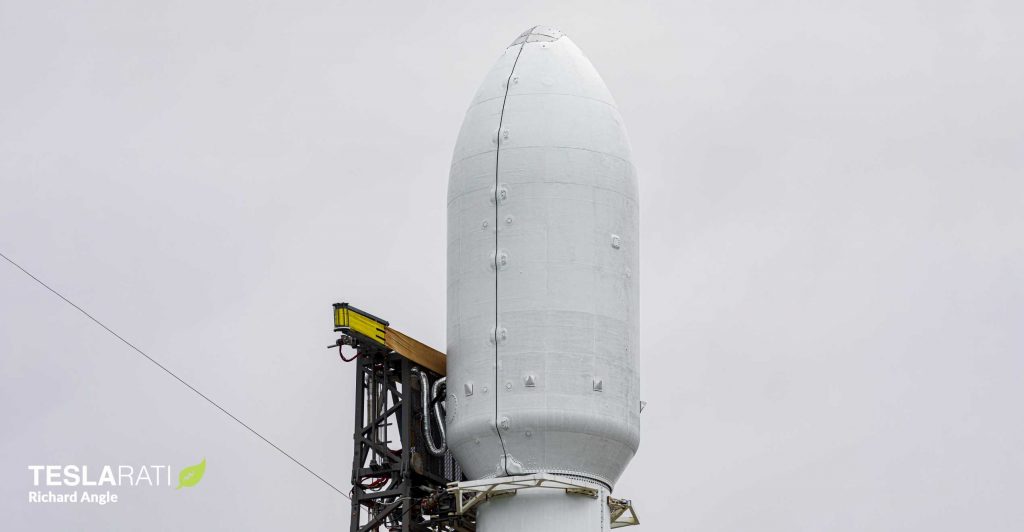
Thanks to the black background of orbital night and the comparatively slow acceleration of Falcon 9’s upper stage past its deployed payload fairing halves, this latest video offers perhaps the best overview yet of the dynamic and unforgiving environment fairings are subjected to during launch. Notably, the superheated hypersonic exhaust of Falcon 9’s Merlin Vacuum (MVac) upper stage engine can be seen impacting both deployed fairing halves as soon as the rocket accelerates away, producing an ethereal glow indicative of the heating and buffeting fairings are subjected to.
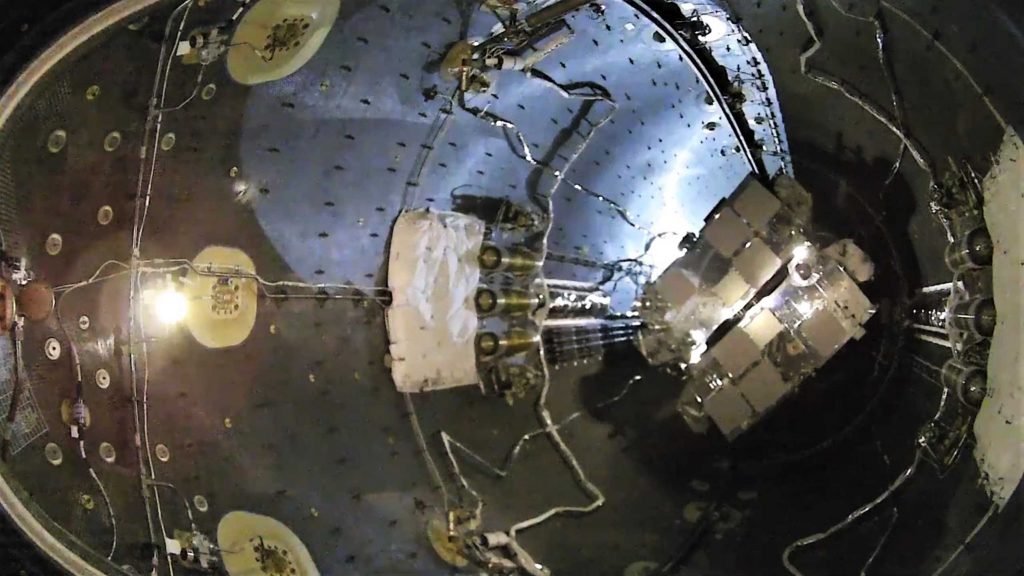
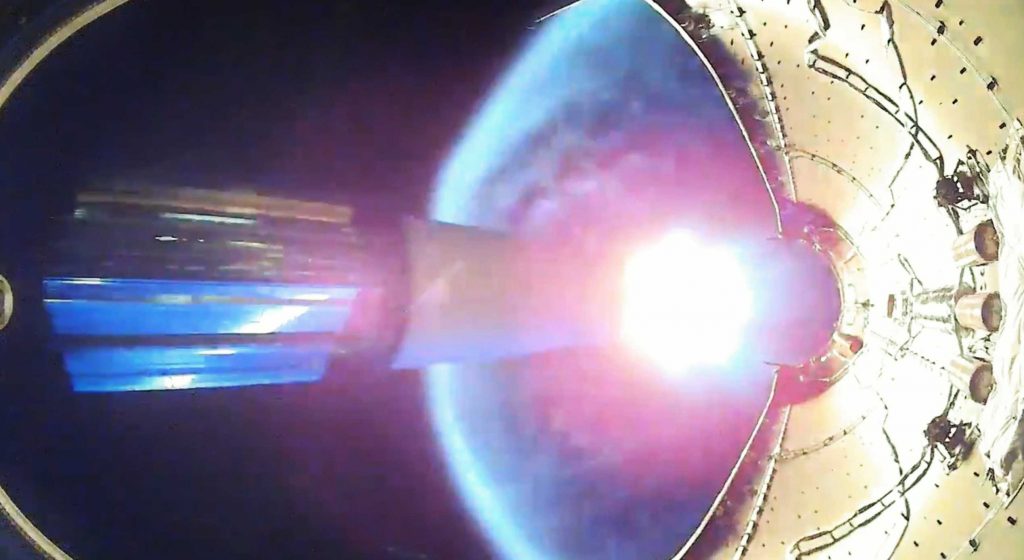

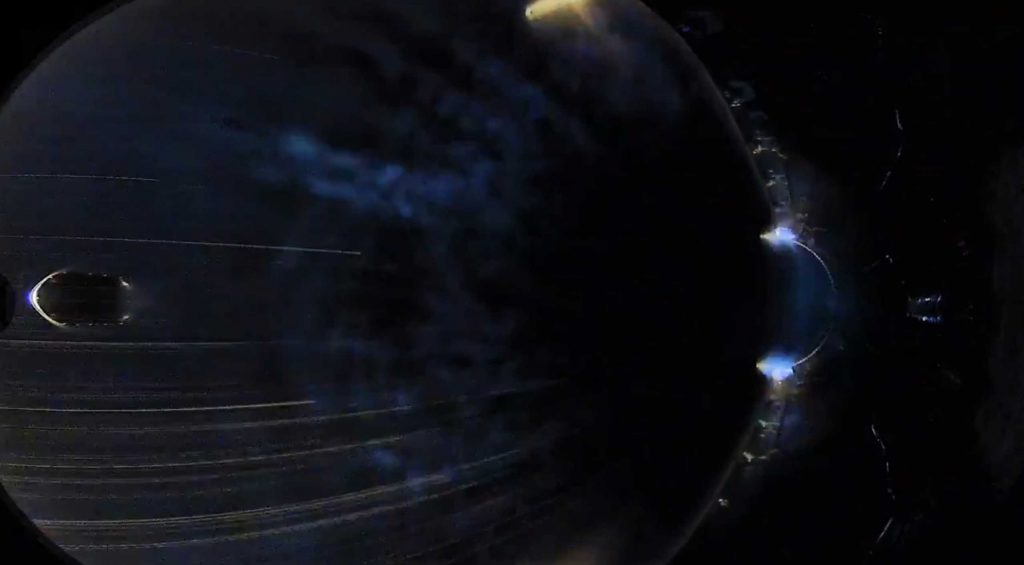
Taken from Falcon Heavy’s third launch, another video published about a year ago also illustrates how extreme that environment is during atmospheric reentry. While their low mass and large surface areas mean that their return to Earth is quite gentle and requires little to no dedicated heat shielding, fairing halves still reach apogees of ~125+ km (80+ mi) and reenter the atmosphere traveling at least 2.5-3 km/s (1.5+ mi/s). As a result, fairing reentries still produce spectacular streaks of plasma as they compress the thickening atmosphere into superheated gas.

Another video taken from Falcon Heavy’s second launch a few months prior offered a different glimpse of fairing separation in daylight, highlighting Falcon 9’s second stage and massive Merlin Vacuum engine – often falling under the radar due to the public’s understandable focus on booster landings.
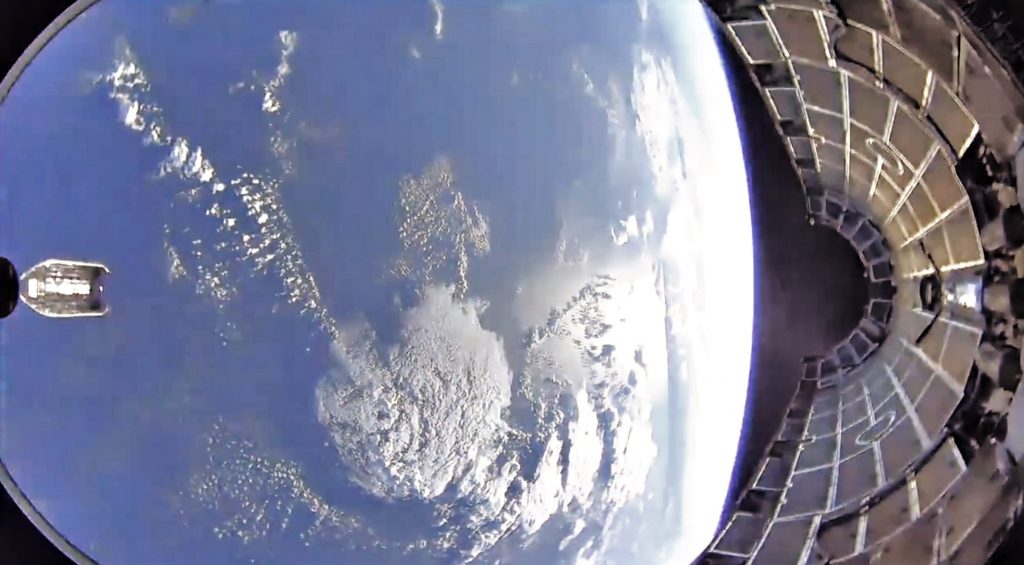
All of the above videos were made possible because SpaceX has – for the most part – perfected the art of gently landing fairing halves on the ocean surface with GPS-guided parafoils. Likely filmed with GoPros, SpaceX has to be able to recover the memory card inside the camera to publish uninterrupted views from inside fairings. While SpaceX still has a ways to go to close the loop and reliably catch those gliding fairing halves in the nets of its dedicated recovery ships, the company clearly has no intention of giving up any time soon.
SpaceX’s next Starlink launch (and fairing recovery attempt) is scheduled no earlier than (NET) 5:42 am EDT (09:42 UTC), June 12th.
Check out Teslarati’s Marketplace! We offer Tesla accessories, including for the Tesla Cybertruck and Tesla Model 3.

News
Tesla Cybercab tests are going on overdrive with production-ready units
Tesla is ramping its real-world tests of the Cybercab, with multiple sightings of the vehicle being reported across social media this week.

Tesla is ramping its real-world tests of the Cybercab, with multiple sightings of the autonomous two-seater being reported across social media this week. Based on videos of the vehicle that have been shared online, it appears that Cybercab tests are underway across multiple states.
Recent Cybercab sightings
Reports of Cybercab tests have ramped this week, with a vehicle that looked like a production-ready prototype being spotted at Apple’s Visitor Center in California. The vehicle in this sighting was interesting as it was equipped with a steering wheel. The vehicle also featured some changes to the design of its brake lights.
The Cybercab was also filmed testing at the Fremont factory’s test track, which also seemed to involve a vehicle that looked production-ready. This also seemed to be the case for a Cybercab that was spotted in Austin, Texas, which happened to be undergoing real-world tests. Overall, these sightings suggest that Cybercab testing is fully underway, and the vehicle is really moving towards production.
Production design all but finalized?
Recently, a near-production-ready Cybercab was showcased at Tesla’s Santana Row showroom in San Jose. The vehicle was equipped with frameless windows, dual windshield wipers, powered butterfly door struts, an extended front splitter, an updated lightbar, new wheel covers, and a license plate bracket. Interior updates include redesigned dash/door panels, refined seats with center cupholders, updated carpet, and what appeared to be improved legroom.
There seems to be a pretty good chance that the Cybercab’s design has been all but finalized, at least considering Elon Musk’s comments at the 2025 Annual Shareholder Meeting. During the event, Musk confirmed that the vehicle will enter production around April 2026, and its production targets will be quite ambitious.
News
Tesla gets a win in Sweden as union withdraws potentially “illegal” blockade
As per recent reports, the Vision union’s planned anti-Tesla action might have been illegal.

Swedish union Vision has withdrawn its sympathy blockade against Tesla’s planned service center and showroom in Kalmar. As per recent reports, the Vision union’s planned anti-Tesla action might have been illegal.
Vision’s decision to pull the blockade
Vision announced the blockade in early December, stating that it was targeting the administrative handling of Tesla’s facility permits in Kalmar municipality. The sympathy measure was expected to start Monday, but was formally withdrawn via documents sent to the Mediation Institute and Kalmar Municipality last week.
As noted in a Daggers Arbete report, plans for the strike were ultimately pulled after employer group SKR highlighted potential illegality under the Public Employment Act. Vision stressed its continued backing for the Swedish labor model, though Deputy negotiation manager Oskar Pettersson explained that the Vision union and IF Metall made the decision to cancel the planned strike together.
“We will not continue to challenge the regulations,” Petterson said. “The objection was of a technical nature. We made the assessment together with IF Metall that we were not in a position to challenge the legal assessment of whether we could take this particular action against Tesla. Therefore, we chose to revoke the notice itself.”
The SKR’s warning
Petterson also stated that SKR’s technical objection to the Vision union’s planned anti-Tesla strike framed the protest as an unauthorized act. “It was a legal assessment of the situation. Both for us and for IF Metall, it is important to be clear that we stand for the Swedish model. But we should not continue to challenge the regulations and risk getting judgments that lead nowhere in the application of the regulations,” he said.
Vision ultimately canceled its planned blockade against Tesla on December 9. With Vision’s withdrawal, few obstacles remain for Tesla’s long-planned Kalmar site. A foreign electrical firm completed work this fall, and Tesla’s Careers page currently lists a full-time service manager position based there, signaling an imminent opening.
News
Tesla Semi program Director teases major improvements

Tesla Semi Program Director Dan Priestly teased the major improvements to the all-electric Class 8 truck on Thursday night, following the company’s decision to overhaul the design earlier this year.
Priestley said he drove the Semi on Thursday, and the improvements appear to be welcomed by one of the minds behind the project. “Our customers are going to love it,” he concluded.
Just drove the redesigned Semi. Our customers are going to love it. https://t.co/KZ88sf1CDL
— Dan Priestley (@danWpriestley) December 19, 2025
The small detail does not seem like much, but it is coming from someone who has been involved in the development of the truck from A to Z. Priestley has been involved in the Semi program since November 2015 and has slowly worked his way through the ranks, and currently stands as the Director of the program.
Tesla Semi undergoes major redesign as dedicated factory preps for deliveries
Tesla made some major changes to the Semi design as it announced at the 2025 Annual Shareholder Meeting that it changed the look and design to welcome improvements in efficiency.
Initially, Tesla adopted the blade-like light bar for the Semi, similar to the one that is present on the Model Y Premium and the Cybertruck.
Additionally, there are some slight aesthetic changes to help with efficiency, including a redesigned bumper with improved aero channels, a smaller wraparound windshield, and a smoother roofline for better aero performance.
All of these changes came as the company’s Semi Factory, which is located on Gigafactory Nevada’s property, was finishing up construction in preparation for initial production phases, as Tesla is planning to ramp up manufacturing next year. CEO Elon Musk has said the Semi has attracted “ridiculous demand.”
The Semi has already gathered many large companies that have signed up to buy units, including Frito-Lay and PepsiCo., which have been helping Tesla test the vehicle in a pilot program to test range, efficiency, and other important metrics that will be a major selling point.
Tesla will be the Semi’s first user, though, and the truck will help solve some of the company’s logistics needs in the coming years.








